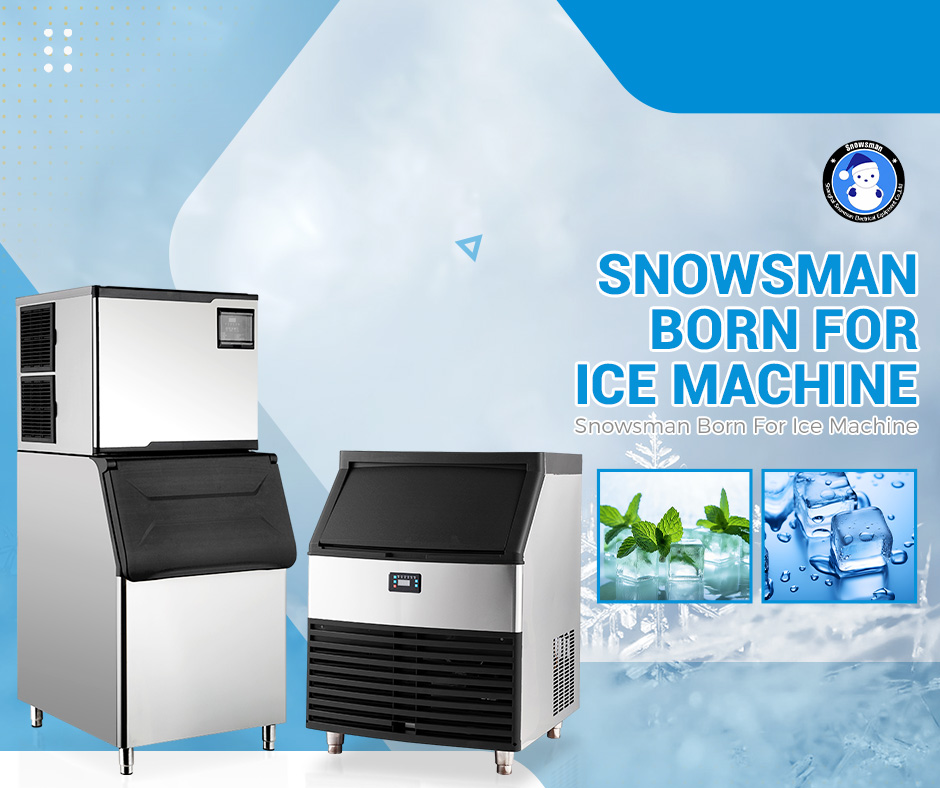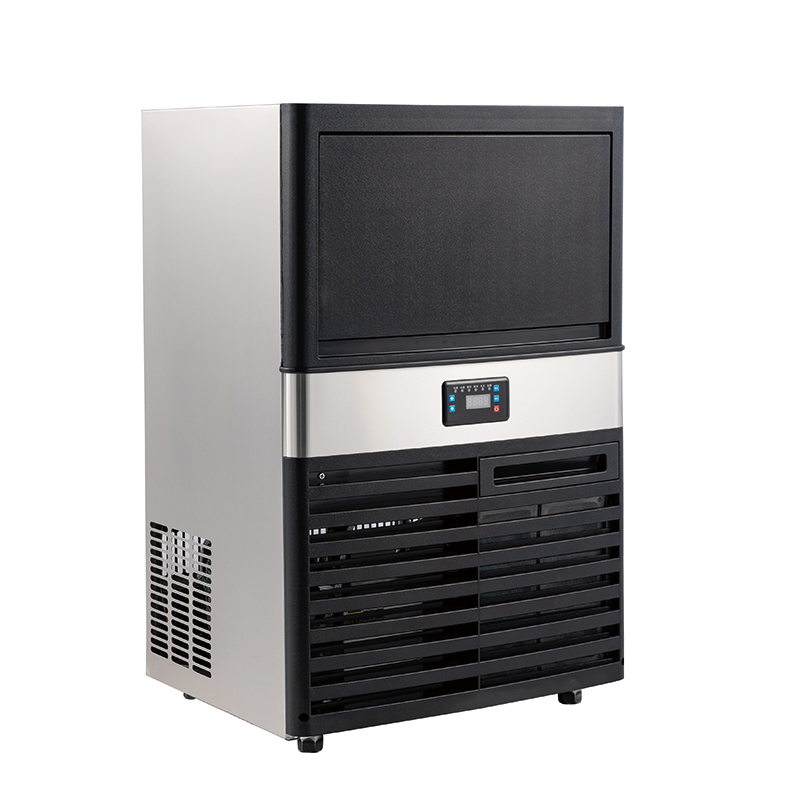
The Difference Between Air-cooled and Water-cooled Ice Machines
Ice machines do one big job: they freeze water into ice and keep it solid. However, there is more than one way to keep a machine cool while it operates. Some machines use air to carry away heat. Others use water. Both cooling systems work, but in different ways. Knowing how they work makes it easier to choose the right model.

Why are there two types of ice machines
Every ice machine needs to control its internal temperature. It has to remove heat so it can keep the ice solid and ready to serve. The cooling system does this job. There are two standard methods: air-cooled and water-cooled.
An air-cooled ice machine uses fans and vents. It pushes warm air out and pulls in cooler air. This helps prevent overheating. A water-cooled ice machine uses water instead. Cold water flows around the hot parts, carries the heat away, and then leaves through a drain.
This matters because if the machine can’t remove heat properly, it won’t produce or hold ice as expected. A weak cooling system can result in soft, wet ice or reduced ice production.
Where each one works best
Air-cooled machines work best in open spaces with good airflow. Think of a big kitchen, warehouse, or a back room that doesn’t get too hot. They need room to breathe and plenty of fresh air moving around.
In cooler regions like Northern Europe, Canada, or parts of the northern US, where average temperatures stay mild most of the year, air-cooled machines are common and preferred by many businesses because they don’t waste water. They also tend to be less expensive to maintain and are easier to install in areas with basic utility setups.
Water-cooled machines are better suited for small, hot environments where air movement is limited. They don’t rely on outside temperature or airflow. In hot, humid regions such as Southeast Asia, the Southern US states of Florida and Texas, or the Middle East, water-cooled machines are more popular, especially in busy restaurants and dessert shops that operate machines continuously throughout the day, even during peak heat hours.
Many operations prefer water-cooled systems because they often provide more stable temperature control and allow the machine to run longer without interruption, especially in hot and crowded environments.
Common issues and their effects
Air-cooled machines often generate noticeable noise due to the continuous operation of internal fans. In smaller environments, this can become disruptive for staff or nearby equipment. Accumulated dust in vents may hinder airflow, potentially leading to overheating. This may result in reduced ice output or damage to internal components. Additionally, air-cooled systems expel warm air into the room, which can increase ambient temperature and strain other devices operating nearby.
Water-cooled machines, by contrast, demand a consistent and substantial water supply. This can significantly increase utility costs. In regions with water usage limits, their operation might incur additional fees or be subject to restrictions. Plumbing issues, such as clogs or leaks, can further disrupt performance.
These disruptions can lead to inconsistent ice quality, machine downtime, and the need for unplanned maintenance or repairs. When unaddressed, they may impact operational efficiency and long-term costs.
The real cost beyond the price tag
The purchase price of an ice machine is only part of the total cost. Ongoing expenses such as energy consumption, water usage, and routine maintenance also contribute to the overall investment.
Air-cooled models may appear more economical initially due to the absence of water usage, but they often consume more electricity, especially in warmer environments where fans must work harder.
Water-cooled machines tend to operate more quietly and can offer longer performance in high-temperature areas. However, these systems can significantly increase water bills. In some cities, additional fees may apply for high water discharge volumes.
Operational costs should be evaluated based on expected usage duration, operating frequency, and maintenance requirements. Factors such as cooling efficiency, airflow conditions, and utility rates play a major role in determining total cost of ownership.
Considerations before purchasing
Several practical questions should be evaluated before purchasing an ice maker:
- Where will the machine go? Is there room for air flow?
- What are the typical ambient temperatures of the installation site?
- What is the expected daily ice demand?
- Are local water costs a concern?
- Is minimal operational noise significant for the environment?
- Will the unit be used in a residential or commercial setting?
The following checklist may assist in narrowing down the most appropriate model:
- Space: Big open room? Go with air-cooled.
- Heat: Hot, tight space? Water-cooled is better.
- Noise: If sound is a concern, water-cooled systems are quieter.
- Bills: Check local water and energy costs.
- Maintenance: Research ice machine condenser types and determine the recommended cleaning frequency.
Taking these factors into account may help prevent operational issues and optimize long-term investment.
Final Thoughts
Air-cooled vs water-cooled pros and cons? They both have them. The best model for outdoor setups may be air-cooled, as water drainage can be challenging outside. The best choice for a busy, hot kitchen might be a water-cooled model, because it doesn’t rely on air movement.
Select the machine that suits the business space, budget, and daily ice requirements. Ultimately, reliable cooling ensures ice remains clean, solid, and ready when needed.

